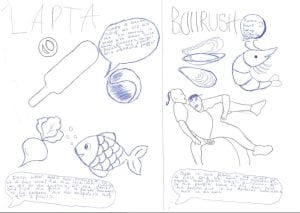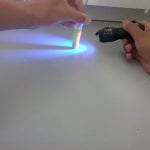for the duration of social study’s is we learn the history about different country’s and then we compared the aspects from these countries. the first country we looked at was European countries. The first country we search about was Russia, for this we compared the aspects of the cultures to NZ first we focused on Russia for this we compared a traditional game form Russia to NZ, then We compared a traditional meal from this country to Russia after Russia we focused on Japan, for Japan we focused on drifting which started in Japan and Samurai Which began in Japan hundreds of years ago.
Samurai
What Is a Samurai?
Samurai, a member of the Japanese warrior caste. The term samurai was originally used to denote the aristocratic warriors (bushi), but it came to apply to all the members of the warrior class that rose to power in the 12th century and dominated the Japanese government until the Meiji Restoration in 1868. The only way to become a samurai was to be born into the samurai family, adopted into a samurai family or to be accepted into a samurai family by marriage.
Samurai Weapons
During the samurai era they had many different weapons which varied form tanto, naginata, wakizashi but the main weapons that samurai used were katana long, katana were long single edged bladed.
The Final Samurai
The last known samurai was Saigo Takamori who was born in the 1820s he was a hero to many in Japan until the 1870 when the accounts of his subordinates claim that he stood up and committed seppuku after his injury or that he requested that his friend Beppu Shinsuke assisted his suicide by slicing his head off.
Tanto knife
The tanto was originally designed as a weapon, but over time it evolved into a versatile utility knife used for various cutting tasks. Naginata A Japanese blade with a long wooden handle that you hold the weapon with. Many samurai use this blade to batter, stab, or hook an opponent. Yari A japanese spear like weapon that samurai used as an effective and cheap means of arming the ever-expanding armies of foot soldiers.



Samurai Armour
Samurai used the armour for protection; the crescent on the top was so that allies could tell who you were. The reason for the oni mask was to intimidate the foe making it easier to strike them down.


How Samurai regain honor
Before samurai are killed they pull out their tanto blade and either stab their stomach or slice their neck. Samurai commit this act to regain honor they have lost from being badly injured. Some samurai cant come to do it themselves so they either get a fellow ally to do it or the enemy does it for them and they can’t regain their honor they lost.


Drifting
What is Drifting?
Drifting is a driving technique where the driver intentionally oversteers, with loss of traction, while maintaining control and driving the car through the entirety of a corner or a turn.
What do judges look for when drifting?
The purpose of drifting, and especially professional drifting by motorsport athletes, is to successfully complete a drift course or race while being judged point-by-point on the quality of their drifting skills. Generally speaking, the purpose of drifting is for the driver to make the car spin sideways, intentionally causing the car to oversteer, in order to achieve a drift state. Drifting works by intentionally putting a car in an oversteer state, where it overcomes the natural traction between the wheels and the road. The driver then controls this state, forcing the car to continue drifting until the turn is complete.ji
DK ( Kunimitsu Takahasi)
Kunimitsu Takahasi who was born in the 1930s is the OG drift king also known as the father of drifting. Kunimitsu Takahashi began drifting way before Keiichi Tsuchiya did, Kunimitsu Takahashi mastered the art of fully sliding sideways. 

What are the best cars for drifting?
There are many good cars for drifting but these are the top cars that most pro drifters think are the best cars for drifting. They vary from many cars like Nissan Skyline, Supra, BMW, Jzx toyota chaser many more but they’re mostly rear wheel drive.


Barrium Hydroxide and Ammonium Chloride
the first thing we did was we grabbed a block of wood and add distilled water on to the wood. Next we put the beaker on the wood the we added Barrium Hydroxide and Ammonium Chloride in to the beaker the mix it until it looks right . Try lifting it and then the block of wood will stick to the beaker lit there was clue on the bottom of the beaker
Comparing NZ to Russia
For social studies we have been comparing different country’s to New Zealand. The country that my group chose for this activity was Russia we compared a sport and a food from Russia to New zealand the sport was lapta and the food was uhka. We compared lapta to bullrush, we chose lapta and bullrush because they had many similarities like in both games you run past the people in the middle, there was also difference like one person doesn’t start in the middle for lapta and you don’t hit a ball in bullrush. Then we compared uhka a traditional russian dish that contains veggies and fish to seafood chowder which also contains fish, shellfish, shrimp and lobster. Our group thought that seafood chowder was a good choice to compare because they both were seafood dishes but they had many differences like uhka has only fish and veggies but seafood chowder has many things from shellfish, to prawns and also fish. finally when we had completed the planning doc we had to create a poster about these two poster

Discovering Chlorophyll’s Glow
kia ora my name is Jimi in science class we did some cool experiments about plants we had to get some leafs from trees and we had to cut them up and put them in these mortar and put this liquid thing in it and mix it with a pestle until the liquid turns green after all that you get a funnel and a test tube you tip the liquid into the funnel and the leafs that fall will get stuck in the funnel after that you take all the leafs out of the mortar and ask the teacher if we could use the UV light and the spot where you point the UV light it will turn orange the you tip the liquid out wash the funnel, test tube, mortar and the pestle the you clean up any small leafs that you dropped.
Cultures
Traditions are a thing that has been going on for thousands of year past down from generation to generation where they celebrate it for their culture
We maoris still use hangis to cook to keep it alive and so we have something to represent our culture. This represents our culture because it’s how we cook our meals.
We celebrate our Matriki culture because it’s a celebration that leads us into a
new year and it is a time to spend time with your family and plant trees. We also have a public holiday so everyone can go off work to spend time with their family. On matariki night everyone goes out to the beach or somewhere nearby so we can light fireworks, see the matariki and have a good time with family.
We eat hangi, boil up, mutton bird, and kai moana. We eat this kai because in New Zealand we love hunting, fishing and diving. So we would always dive for kina and oysters, anything we can get from the ocean we would eat. We also love hunting so we would hunt for mutton birds and pigs.
–Mutton Bird
In our Maori culture you may see a lot of people with a green necklace or a white necklace. These are called Pounamu and Taunga. It is a treasure that our family members have either given to us or have passed down to us. Our Taunga are very special to us because they hold a lot of spiritual and cultural meaning.
We have a traditional dance called the Haka. The first hakas were created and performed by different Māori tribes as a war dance. It is an ancestral war cry. It was performed on the battlefields for two reasons. Firstly, it was done to scare their opponents; the warriors would use aggressive facial expressions such as bulging eyes and poking of their tongues.
our culture is got a lot to do with kai moana/seafood
Kai moana is important because it helps with a lot of things
In our culture. Kinas are really good for growing plants
Hello world!
Welcome to your brand new blog – a space to share your learning journey.
To get started, simply visit your blog’s dashboard, edit or delete this post and check out all the other options available to you.
Like more help?
We can walk you through step-by-step in our guide to getting started with your blog.
You can see what other learners are sharing on their blogs here.
Happy blogging!
